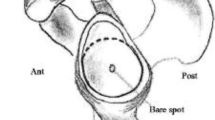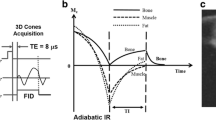Abstract
Assessing glenoid morphology as well as quantifying bone loss is critical when treating patients with recurrent anterior glenohumeral instability because this greatly affects surgeons surgical planning. Although many surgeons agree that 3-dimensionally reconstructed computed tomography (3DCT) images with humeral head digitally subtracted has been considered to be a gold standard when assessing glenoid morphology, there are some surgeons who are making an attempt to replace computed tomography with magnetic resonance imaging to reduce cost for imaging studies and avoid possible radiation exposure, and demonstrated that MRI was equally valuable as 3DCT to quantify glenoid bone loss. However, the role of preoperative imaging study is not only quantifying glenoid bone loss but to assess the glenoid shape and morphology to facilitate surgeons stabilizing the shoulder. In this view, 3DCT is the most recommended preoperative imaging study for bony tissue which provides critical and substantial information of the glenoid.




Similar content being viewed by others
References
Papers of particular interest, published recently, have been highlighted as: • Of importance •• Of major importance
Bigliani LU, Newton PM, Steinmann SP, Connor PM, McLlveen SJ. Glenoid rim lesions associated with recurrent anterior dislocation of the shoulder. Am J Sports Med. 1998;26:41–5.
Rockwood CA, Matsen FA. The scapula. In Butters KP, (editor). The shoulder. WB Saunders; Philadelphia, USA; 1990;345–53.
De Palma AF. Fractures and fracture-dislocations of the shoulder girdle. In: Jacob RP, Kristainsen T, Mayo K, et al, (editors). Surgery of the shoulder. Ed 3. JB Lippincott; Philadelphia, USA; 1983;366–7.
Sugaya H, Moriishi J, Dohi M, Kon Y, Tsuchiya A. Glenoid rim morphology in recurrent anterior glenohumeral instability. J Bone Joint Surg Am. 2003;85:878–84.
Sugaya H, Moriishi J, Kanisawa I, Tsuchiya A. Arthroscopic osseous Bankart repair for chronic recurrent traumatic anterior glenohumeral instability. J Bone Joint Surg Am. 2005;87A:1752–60.F.
Burkhart SS, De Beer JF. Traumatic glenohumeral bone defects and their relationship to failure of arthroscopic Bankart repairs: significance of the inverted-pear glenoid and the humeral engaging Hill-Sachs lesion. Arthroscopy. 2000;16:677–94.
Lo IK, Parten PM, Burkhart SS. The inverted pear glenoid: an indicator of significant glenoid bone loss. Arthroscopy. 2004;20:169–74.
Bernageau J. Imaging of the shoulder in orthopedic pathology [French]. Rev Prat. 1990;40:983–92.
Edwards TB, Boulahia A, Walch G. Radiographic analysis of bone defects in chronic anterior shoulder instability. Arthroscopy. 2003;19:732–9.
Sugaya H. Chapter 14. Instability with Bone Loss. In: Angelo RL, Esch JC, Ryu RK, editors. AANA Advanced Arthroscopy: The Shoulder. Philadelphia: Elsevier; 2010. p. 136–46.
Sugaya H. Section 2 anterior instability: Chapter 15 arthroscopic treatment of glenoid bone loss-Surgical technique. In: Provencher MT, Romeo AA, editors. Shoulder Instability; A Comprehensive Approach. Philadelphia: Elsevier; 2011. p. 186–96.
Murachovsky J, Bueno RS, Nascimento LG, Almeida LH, Strose E, Castiglia MT, et al. Calculating anterior glenoid bone loss using the Bernageau profile view. Skeletal Radiol. 2012;41:1231–7.
Griffith JF, Antonio GE, Tong CW, Ming CK. Anterior shoulder dislocation: quantification of glenoid bone loss with CT. Am J Roentgenol. 2003;180:1423–30.
Griffith JF, Antonio GE, Yung PS, Wong EM, Yu AB, Ahuja AT, et al. Prevalence, pattern, and spectrum of glenoid bone loss in anterior shoulder dislocation: CT analysis of 218 patients. Am J Roentgenol. 2008;190:1247–54.
Sugaya H, Moriishi J, Kanisawa I, Tsuchiya A. Arthroscopic osseous Bankart repair for chronic traumatic anterior glenohumeral instability. Surgical technique. J Bone Joint Surg Am. 2006;88A(1):159–69.
Porcellini G, Campi F, Paladini P. Arthroscopic approach to acute bony Bankart lesion. Arthroscopy. 2002;18:764–9.
Burkhart SS, Debeer JF, Tehrany AM, Parten PM. Quantifying glenoid bone loss arthroscopically in shoulder instability. Arthroscopy. 2002;18:488–91.
Griffith JF, Yung PS, Antonio GE, Tsang PH, Ahuja AT, Chan KM. CT compared with arthroscopy in quantifying glenoid bone loss. Am J Roentgenol. 2007;189:1490–3.
Chuang TY, Adams CR, Burkhart SS. Use of preoperative three-dimensional computed tomography to quantify glenoid bone loss in shoulder instability. Arthroscopy. 2008;24:376–82.
Nofsinger C, Browning B, Burkhart SS, Pedowitz RA. Objective preoperative measurement of anterior glenoid bone loss: a pilot study of a computer-based method using unilateral 3-dimensional computed tomography. Arthroscopy. 2011;27:322–9.
Dumont GD, Russell RD, Browne MG, Robertson WJ. Area-based determination of bone loss using the glenoid arc angle. Arthroscopy. 2012;28:1030–5.
De Filippo M, Castagna A, Steinbach LS, Silva M, Concari G, Pedrazzi G, et al. Reproducible noninvasive method for evaluation of glenoid bone loss by multiplanar reconstruction curved computed tomographic imaging using a cadaveric model. Arthroscopy. 2013;29:471–7.
Shi L, Griffith JF, Huang J, Wang D. Excellent side-to-side symmetry in glenoid size and shape. Skeletal Radiol. 2013. [Epub ahead of print]. Authors demonstrated high side to side symmetry in glenoid size and shape in normal shoulders using 60 healthy subjects. This study provides objective and quantitative justification for using normal contralateral glenoid as a reference for unilateral glenoid bone loss.
Huijsmans PE, Haen PS, Kidd M, Dhert WJ, van der Hulst VP, Willems WJ. Quantification of a glenoid defect with three-dimensional computed tomography and magnetic resonance imaging: a cadaveric study. J Shoulder Elbow Surg. 2007;16:803–9.
Gyftopoulos S, Hasan S, Bencardino J, Mayo J, Nayyar S, Babb J, et al. Diagnostic accuracy of MRI in the measurement of glenoid bone loss. Am J Roentgenol. 2012;199:873–8.
Lee RK, Griffith JF, Tong MM, Sharma N, Yung P. Glenoid bone loss: assessment with MR imaging. Radiology. 2013;267:496–502.
Stecco A, Guenzi E, Cascone T, Fabbiano F, Fornara P, Oronzo P, et al. MRI can assess glenoid bone loss after shoulder luxation: inter- and intra-individual comparison with CT. Radiol Med. 2013. [Epub ahead of print].
Owens BD, Burns TC, Campbell SE, Svoboda SJ, Cameron KL. Simple method of glenoid bone loss calculation using ipsilateral magnetic resonance imaging. Am J Sports Med. 2013;41:622–4.
Bois AJ, Fening SD, Polster J, Jones MH, Miniaci A. Quantifying glenoid bone loss in anterior shoulder instability: reliability and accuracy of 2-dimensional and 3-dimensional computed tomography measurement techniques. Am J Sports Med. 2012;40:2569–77.
Rerko MA, Pan X, Donaldson C, Jones GL, Bishop JY. Comparison of various imaging techniques to quantify glenoid bone loss in shoulder instability. J Shoulder Elbow Surg. 2013;22:528–34. Authors estimated diagnostic accuracy by comparing 3DCT with 2DCT, radiography, and MRI using cadaveric specimen with native shoulders and 3 sequential anteroinferior defects, and concluded that 3DCT is the most accurate and reliable imaging modality.
Bishop JY, Jones GL, Rerko MA, Donaldson C, MOON Shoulder Group. 3-D CT is the most reliable imaging modality when quantifying glenoid bone loss. Clin Orthop Relat Res. 2013;471:1251–6.
Compliance with Ethics Guidelines
ᅟ
Conflict of Interest
Hiroyuki Sugaya receives payment from DepuySynthes and Smith & Nephew for development of education presentations including speakers’ bureaus.
Human and Animal Rights and Informed Consent
This article itself does not contain any studies with human or animal subjects performed by the author. In addition, the author's articles cited in this manuscript had cleared human and animal rights and obtained informed consent from all subjects.
Author information
Authors and Affiliations
Corresponding author
Rights and permissions
About this article
Cite this article
Sugaya, H. Techniques to evaluate glenoid bone loss. Curr Rev Musculoskelet Med 7, 1–5 (2014). https://doi.org/10.1007/s12178-013-9198-3
Published:
Issue Date:
DOI: https://doi.org/10.1007/s12178-013-9198-3




